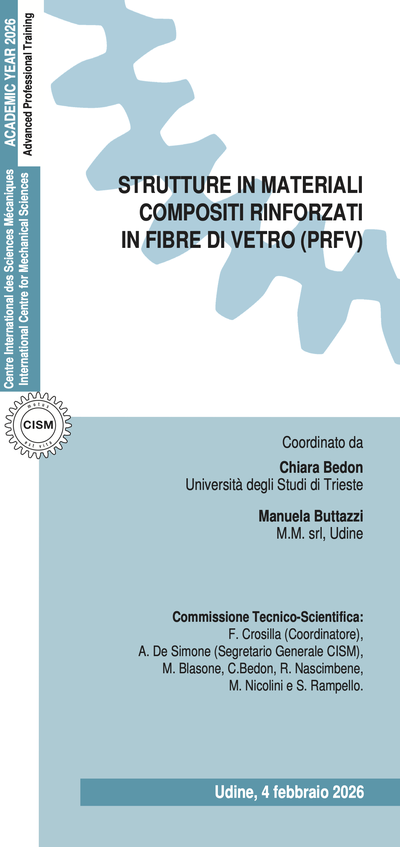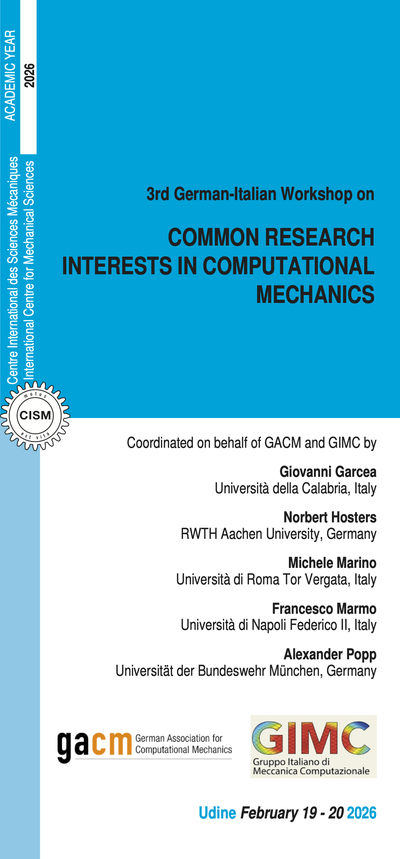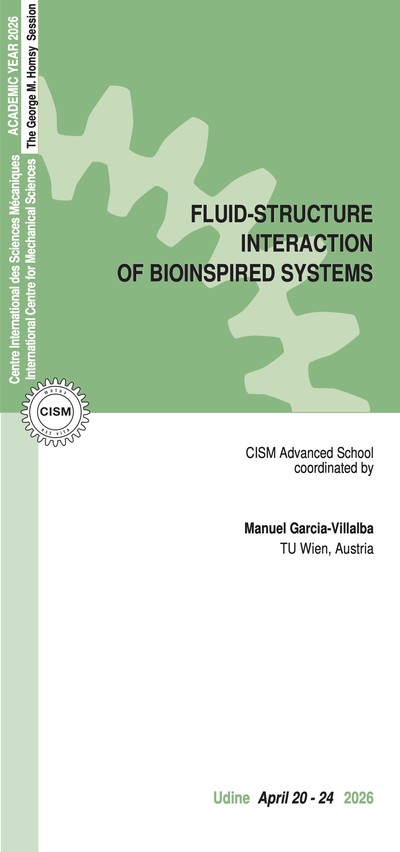Structural Topology Optimization is a relatively new, but rapidly expanding and extremely popular field of structural mechanics. Various theoretical aspects, as well as a great variety of numerical methods and applications have been discussed extensively in international journals and at conferences. At the last three World Congresses of Structural and Multidisciplinary Optimization, the ratio of papers on topology optimization was about 40, 40 and 50 per cent. The ratio has been similarly high in the journal Structural and Multidisciplinary Optimization (Springer). Such a level of interest in this field is due to the substantial savings that can be achieved by topology optimization in industrial applications. Moreover, structural topology optimization has interesting theoretical implications in mathematics, mechanics, multi-physics and computer science. The present proposal is for the fourth CISM Advanced Course on Structural Topology Optimization. The previous courses (1992, 1997 and 2012) were organized by the proponent of this one (Rozvany), the 2012 course jointly with T. Lewinski. Whilst the Advanced Course in 2012 mostly dealt with theoretical issues and exact analytical solutions, the present one is aimed at covering numerical (discretized) methods and computational aspects of structural topology optimization, including the mathematical background of these methodologies. Consequently, there is no overlap between the two courses. Numerical methods are more directly applicable to practical problems in the industry. Each of the lecturers is a leading specialist in some aspects of numerical topology optimization, including the most eminent researcher in the field, Prof. Sigmund. All invited lecturers are full professors at prestigious universities in Europe or the USA. In an introductory lecture, the organizer (Rozvany) will explain the connections between exact analytical methods (reviewed in the 2012 course) and discretized, numerical algorithms, discussing the relative importance of both. Analytical solutions are extremely useful as reliable benchmarks for checking on the validity, convergence and accuracy of numerical solutions. Moreover, many numerical algorithms are actually discretized versions of exact analytical methods. The 2012 course was highly successful in terms of the number of participants, but the one proposed for 2014 should be of even greater interest to researchers and practitioners in the field. The main topic of the 2014 course is planned to be topology optimization of structures, i. e. stressed systems consisting of solids, but several lecturers (Profs. Sigmund, Maute and Paulino) intend to discuss problems concerning fluids, photonics, and also multi-physical applications. It is proposed that the mathematical background of topology optimization methods will be explained by a top mathematician in the field, Prof. Svanberg, who has created the most efficient, and therefore most popular, non-linear programming method (MMA) of structural optimi-zation (and of topology optimization in particular). Other aspects of the mathematical background will be reviewed by Prof. Duysinx, who will also look at particular classes of topology optimization problems (e. g. stress-based, eigenvalue type, multi-body and discrete material problems). Various techniques of numerical topology optimization, including density based (SIMP) and Level Set methods, as well as filtering, robust formulations and advanced discretization techniques will be re-viewed in depth by Profs Sigmund and Maute. Polygonal discretization and multi-resolution topology optimization, with applications in solid and fluid mechanics, will be discussed in detail by Prof. Paulino, who will also show applications in architecture and medicine. The advanced school is addressed to Ph.D. students and post-doctoral scholars in engineering, mathematics, computer-science and multi-physics, their supervisors, as well as practicing engineers and senior researchers.
Sigmund O., Maute K. 2013: Topology optimization approaches. Struct. Multidisc. Optim. Bendsoe M.P., Sigmund O., 2003: Topology optimization: Theory, methods and applications. Springer, Berlin. van Dijk N.P., Maute K., Langelaar M., van Keulen F., 2013: Level set methods for structural topology optimization: a review. Struct. Multidisc. Optim. 48:437-472. Gain A.L., Paulino G.H., 2013: A critical comparative assessment of differential equation-driven methods for structural topology optimization. Struct. Mult. Optim. 48(4):685-710. Rozvany G.I.N., Lewinski T., (2014): Topology optimization in structural and continuum mechanics. CISM Courses and Lectures. Vol. 549. Springer, Vienna. Deaton J.D., Grandhi R.V., 2014: a survey of structural and multidisciplinary topology optimization: past 2000. Struct. Multidisc. Optim. Rozvany G.I.N., 2009: A critical review of established methods of structural topology optimization. Struct. Multidisc. Optim. 37:217-237. Sutradhar A., Paulino G.H., Miller M.J., Nguyen T.H. 2010: Topological optimization for designing patient-specific large craniofacial segmental bone replacements. Proceedings of the National Academy of Sciences (PNAS), 107(30):13222-13227. Talischi C., Paulino G.H., Pereira A., Menezes I.F.M. 2012: PolyMesher: A general-purpose mesh generator for polygonal elements. Matlab. Struct. Multidisc. Optim. 45(3):309-328. Talischi C., Paulino G.H., Pereira A., Menezes I.F.M. 2012: "PolyTop: a Matlab implementation of a general topology optimization framework using unstructured polygonal finite element meshes". Struct. Multidisc. Optim. 45(3):329-357.
Pierre Duysinx (None)
6 lectures on: Methods based on convex separable approximation for structural optimization. Perimeter methods. Stress constrained topology optimization. Topology optimization for solving discrete material optimization problems. Topology optimization of structural components in multi-body dynamic systems. Topology optimization subject to stability constraints.Kurt Maute (None)
6 lectures on: Advanced discretization schemes for topology optimization: discontinuous Galerkin Finite Element methods; Stabilized finite element methods, the extended finite element method. Topology optimization for multi-physics problems: algorithms and coupling methods. Iterative solvers for large scale topology optimization problems. Level set methods – Part I. Level set methods – Part II.Glaucio H. Paulino (None)
6 lectures on: Recent trends in topology optimization: from building design to reconstructive craniofacial surgery. Topology optimization on polytopes I: PolyMesher. Topology optimization on polytopes II: PolyTop. PolyFluid: Fluid flow topology optimization using polygonal discretization. Multiresolution topology optimization (MTop). Ground structure analysis and design (GRAND).George Rozvany (None)
6 lectures on: Introduction to exact analytical theory of optimal structural topologies. Extensions of the exact optimal layout theory to multi-load topology optimization - Part I: Plastic design - Part II: Elastic design. Recent improvements of the SERA (modified BESO) method. Adaptive ground structure approach based on the interior point and active set methods. Practical aspects of topology optimization for industrial applications. (Co-authors of the last two lectures will be Tomasz Sokol and Ming Zhou).Ole Sigmund (None)
6 lectures on: Introduction to density-based topology optimization. Filters and robust topology optimization formulations. Adjoint sensitivity analysis. Manufacturing constraints. Mechanism and multiphysics design. Applications in photonics.Krister Svanberg (None)
5 lectures on: Introduction to finite-dimensional optimization. Linear- and quadratic optimization. The Karush-Kuhn-Tucker optimality conditions. Some solution methods for nonlinear optimization. Convex problems and duality concepts.




